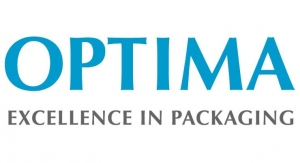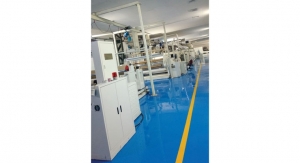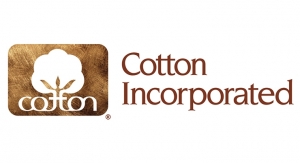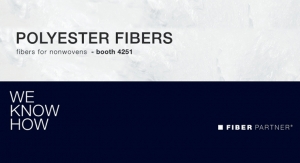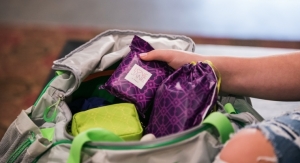06.22.17
The report "Non-woven Adhesives Market by Type (Styrenic Block Copolymers, Amorphous Poly Alpha Olefins), Application (Baby Care, Feminine Hygiene, Adult Incontinence, Medical), and Region - Global Forecast to 2022", published by MarketsandMarkets, the market is projected to grow from $1.83 billion in 2017 to $2.76 billion by 2022, at a CAGR of 8.63% during the forecast period.
A number of end-use applications, coupled with the rising demand for disposable hygiene products, is expected to boost the demand for nonwoven adhesives in the near future. These adhesives possess high elasticity and offer excellent performance and efficiency in the manufacture of hygiene products. These factors have propelled the growth of the nonwoven adhesives market in applications such as baby care, feminine hygiene, and adult incontinence.
Among types, the amorphous poly alpha olefins segment of the nonwoven adhesives market is projected to grow at the highest CAGR during the forecast period. The demand for Amorphous Poly Alpha Olefins (APAO) based nonwoven adhesives is increasing because it offers high resistance to acids and solvents, with better cost-effectiveness than other competing adhesives.
Among non-woven adhesive applications, the medical segment is projected to grow at the highest CAGR during the forecast period. Nonwoven adhesives are primarily used for the manufacture of nonwoven medical products such as medical pads, surgical drapes, medical dressings, bed pads, gowns, and others. The growing aging population and advancements in medical procedures are expected to fuel the growth of the non-woven adhesives market. Developments in the healthcare sector are also expected to lead to the growth of the medical hygiene adhesives market.
The Asia-Pacific nonwoven adhesives market is projected to grow at the highest CAGR during the forecast period. The Asia-Pacific Nonwoven Adhesives Market is projected to grow at the highest CAGR during the forecast period. The growth of the Asia-Pacific nonwoven adhesives market can be attributed to the rising demand for nonwoven adhesives from emerging economies of the Asia-Pacific region, which include India, China, Indonesia, Taiwan, and Malaysia, among others. Moreover, factors such as the improving standards of living and rising per capita incomes in the countries of the Asia-Pacific region are also fueling the growth of the Asia-Pacific nonwoven adhesives market.
A number of end-use applications, coupled with the rising demand for disposable hygiene products, is expected to boost the demand for nonwoven adhesives in the near future. These adhesives possess high elasticity and offer excellent performance and efficiency in the manufacture of hygiene products. These factors have propelled the growth of the nonwoven adhesives market in applications such as baby care, feminine hygiene, and adult incontinence.
Among types, the amorphous poly alpha olefins segment of the nonwoven adhesives market is projected to grow at the highest CAGR during the forecast period. The demand for Amorphous Poly Alpha Olefins (APAO) based nonwoven adhesives is increasing because it offers high resistance to acids and solvents, with better cost-effectiveness than other competing adhesives.
Among non-woven adhesive applications, the medical segment is projected to grow at the highest CAGR during the forecast period. Nonwoven adhesives are primarily used for the manufacture of nonwoven medical products such as medical pads, surgical drapes, medical dressings, bed pads, gowns, and others. The growing aging population and advancements in medical procedures are expected to fuel the growth of the non-woven adhesives market. Developments in the healthcare sector are also expected to lead to the growth of the medical hygiene adhesives market.
The Asia-Pacific nonwoven adhesives market is projected to grow at the highest CAGR during the forecast period. The Asia-Pacific Nonwoven Adhesives Market is projected to grow at the highest CAGR during the forecast period. The growth of the Asia-Pacific nonwoven adhesives market can be attributed to the rising demand for nonwoven adhesives from emerging economies of the Asia-Pacific region, which include India, China, Indonesia, Taiwan, and Malaysia, among others. Moreover, factors such as the improving standards of living and rising per capita incomes in the countries of the Asia-Pacific region are also fueling the growth of the Asia-Pacific nonwoven adhesives market.

